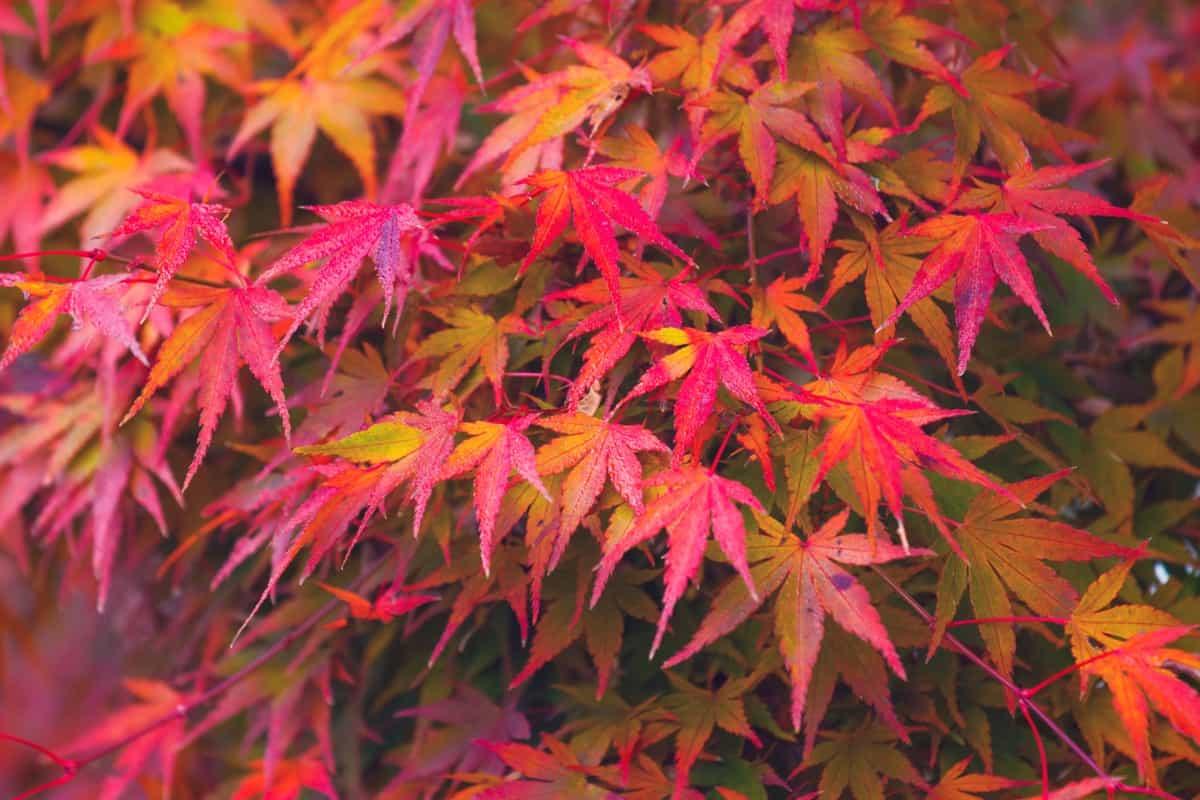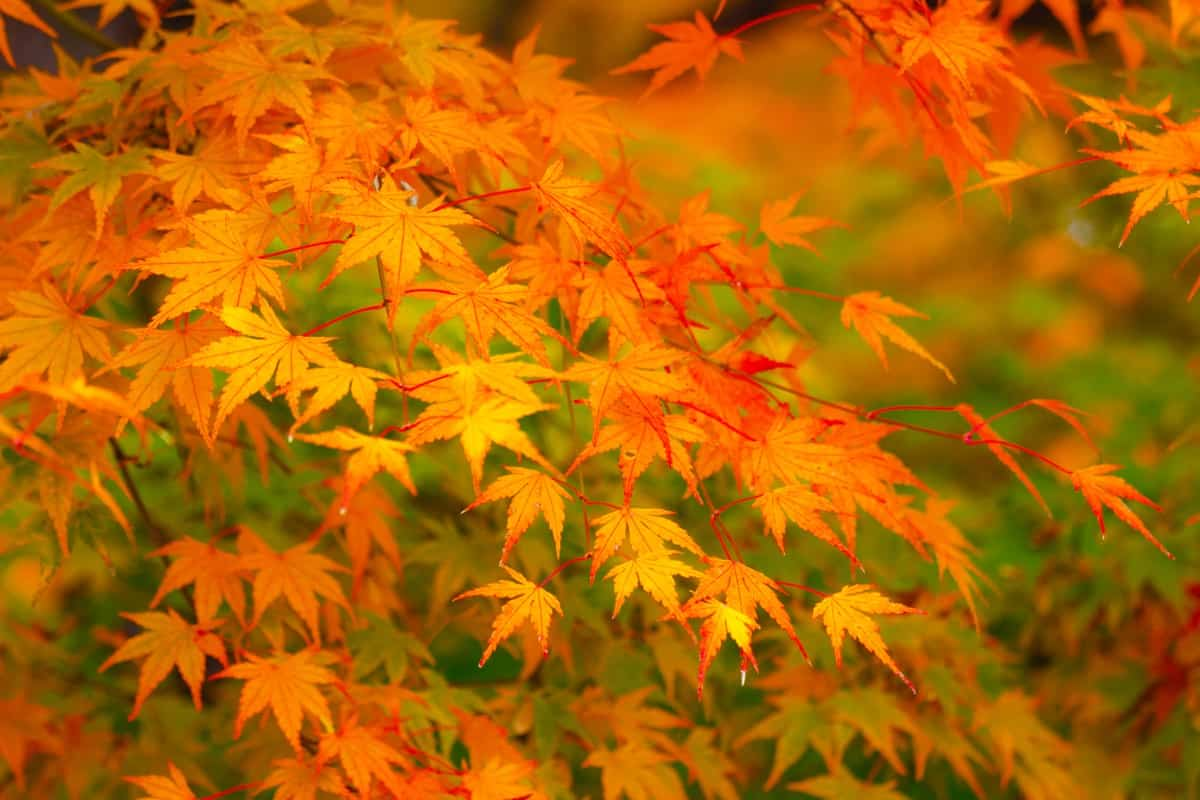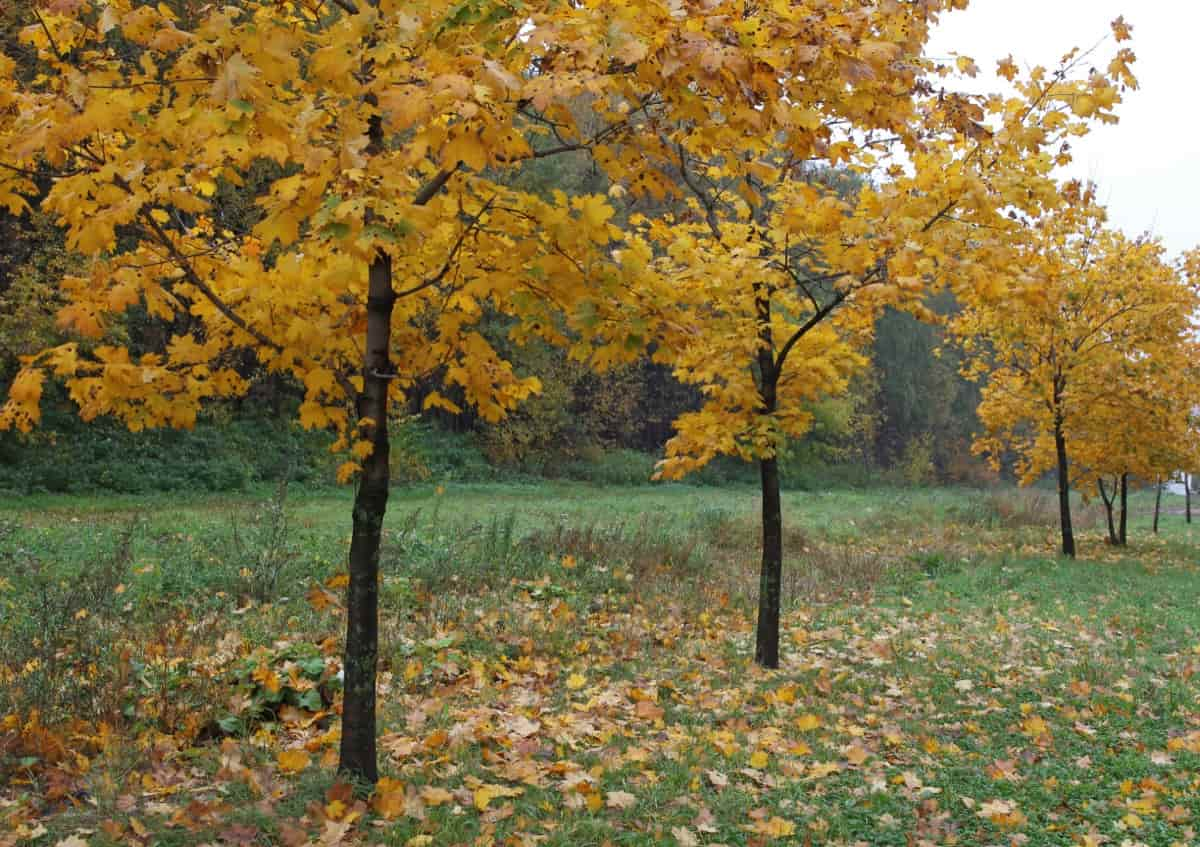Caring for maple trees’ vibrant hues and intricate leaf structures requires a good understanding of their nutritional needs. One of the most asked questions by gardening enthusiasts is, “What kind of fertilizer is best for maple trees?” The type of maple in question significantly influences the answer.

Whether you’re looking for the best fertilizer for Japanese maples, red maples, autumn blaze maples, or sugar maples, each tree has unique nutritional requirements. Maple tree fertilizer recommendations also vary depending on factors like soil quality, the age of the tree, and the tree’s specific location. From slow-release fertilizers to the appropriate maple tree fertilizer ratio, this article provides a detailed overview.
Best Fertilizer for Maple Trees
Organic Vs. Synthetic Fertilizers for Maple Trees: Pros and Cons
Organic fertilizers originate from natural sources like compost, manure, and bone meal. They release nutrients slowly, providing a steady supply to the plants and enhancing soil quality over time. On the other hand, synthetic fertilizers are commercially produced, offering a quick nutrient boost. For maple trees, both types have their advantages. Organic fertilizers improve soil structure, leading to healthier roots. Synthetic options, while fast-acting, can sometimes cause a nutrient burn if not used correctly. Choosing between them often depends on immediate needs and personal preferences.
Slow-release Fertilizers for Maple Trees
Slow-release fertilizers are particularly beneficial for maple trees. They gradually provide nutrients over an extended period, reducing the risk of over-fertilization and root damage. Especially for maple trees in pots, a slow-release formula can sustain the plant for months, negating the need for frequent feeding. It’s an excellent choice for those looking for minimal maintenance solutions.
Liquid Fertilizers for Maple Trees
Liquid fertilizers are easily absorbed and provide an instant nutrient boost. These are ideal for younger trees that need quick growth spurts. However, they must be applied more frequently than granular or slow-release alternatives. Liquid fertilizers are crucial for quickly revitalizing the health of deficient trees.
In case you missed it: How to Grow and Care for Japanese Red Maple Bonsai: Planting, Pruning, and Repotting

Fertilizer Application Practices for Maple Trees: Timing, Dosage, and Techniques
The best time to fertilize maple trees is in early spring when they break dormancy. A second application in early summer can further support growth. However, avoid fertilizing late in the season as it can promote new growth vulnerable to winter damage. As for dosage, always follow the manufacturer’s instructions, but generally, a balanced ratio, such as 10-10-10, works well for most maples. When applying, spread the fertilizer evenly around the tree’s dripline and water thoroughly.
Best Fertilizer for Autumn Blaze Maple Trees
Consider a balanced formula when pondering, “What is the best fertilizer for autumn blaze maples?”. Autumn blaze maples benefit from an even mix of nitrogen, phosphorus, and potassium. Fertilizers like 10-10-10 can promote healthy growth, vivid fall colors, and robust root systems.
Best Fertilizer for Red Maple Trees
Red maples are particularly sensitive to their environment, making their nutritional needs paramount. For those wondering, “What is the best fertilizer for red maple trees?” a fertilizer with a slightly higher nitrogen content can boost their vibrant foliage. However, ensure the phosphorus and potassium levels remain balanced to support overall health.
Best Fertilizer for Sugar Maple Trees
Sugar maples are renowned for their spectacular autumn colors. These trees thrive when using a well-balanced fertilizer containing equal parts of nitrogen, phosphorus, and potassium. Additionally, ensuring adequate magnesium can enhance their vivid fall display.
Best Fertilizer for Japanese Maple Trees
With their intricate leaf patterns and hues, Japanese maples require specific care. If you’re questioning, “What is the best fertilizer for Japanese maples?” the answer lies in a slightly acidic fertilizer with a balanced nutrient profile. This ensures that the vibrant colors of the Japanese maple leaves remain stunning throughout the seasons.
Maple Tree Fertilizer 10-4-6
The 10-4-6 fertilizer ratio is sometimes recommended for specific maple varieties. This ratio means the fertilizer contains 10% nitrogen, 4% phosphorus, and 6% potassium. The higher nitrogen content supports leafy growth, making it suitable for young maples or those needing a foliage boost.
Maple Tree Fertilizer Ratio
Understanding the maple tree fertilizer ratio is crucial. While a balanced 10-10-10 ratio works for many maples, some may benefit from a slightly altered composition. The ratio determines the nutrient content, with the three numbers representing nitrogen, phosphorus, and potassium. Adjusting these percentages can cater to a maple tree’s unique needs, promoting optimal health and growth.
In case you missed it: How to Grow and Care for Japanese Maple: Planting Instructions

Maple Tree Fertilizer Spikes
Fertilizer spikes are pre-measured solid fertilizers pushed into the ground around the tree’s drip line. They offer a convenient, no-mess way to provide nutrients to the roots. These spikes can ensure a steady release of nutrients for maple trees, minimizing the risk of over or under-fertilization. However, always ensure the spikes you choose are appropriate for maple trees and the tree’s specific needs.
Mulching Techniques for Maple Trees
Mulching serves multiple purposes for maple trees. Not only does it help retain soil moisture and regulate temperature, but it also suppresses weed growth and adds a decorative touch to the garden landscape. Choosing an organic mulch like wood chips or bark is essential when mulching maple trees. These materials decompose over time, enriching the soil with essential nutrients.
Start by clearing the area around the tree of any weeds or grass. Then, apply a 2-4 inch layer of mulch, ensuring it doesn’t touch the tree’s trunk, as this can lead to rot or pest issues. Over time, as the mulch breaks down, it will improve soil texture and provide a steady supply of organic matter.
Watering Practices for Maple Trees
Watering is vital for the survival and health of maple trees. Young trees, in particular, require consistent moisture until their root systems establish. While it’s essential to maintain moist soil, overwatering can be detrimental, leading to root rot. For best results, water deeply but infrequently.
This technique encourages roots to grow deeper, making the tree more resilient during dry periods. When watering, aim for early morning or late evening to minimize evaporation. Additionally, consider factors like soil type, climate, and the tree’s age. Sandy soils drain quickly, requiring more frequent watering, while clay soils retain moisture longer.
Pruning and Maintenance for Maple Trees
Pruning is crucial to maple tree care, promoting a strong structure and removing dead or diseased branches. The best time to prune maples is during the dormant season, either late winter or early spring. This timing reduces sap flow and minimizes stress on the tree. When pruning, always use sharp tools to make clean cuts. Begin by removing any dead, damaged, or diseased branches.
In case you missed it: Best 15 Plant Nurseries in Houston: Top Garden Centers to Shop for Plants

Next, thin out crowded branches for better light penetration and air circulation. Trimming branches that cross or rub against each other is also a good practice. Regular pruning enhances the tree’s aesthetic appeal and ensures its overall health and longevity.
Conclusion
Nurturing maple trees to their full potential requires understanding their nutrient requirements. From choosing between organic and synthetic to determining the ideal fertilizer ratio, each decision impacts the tree’s health and vibrancy. Following the guidelines and recommendations, you can ensure your maple trees thrive in any setting.
- Feed Your Flock for Less: Top 10 Tips to Save on Chicken Feed
- Ultimate Guide to Ossabaw Island Hog: Breeding, Raising, Diet, and Care
- Hatching Answers: The Top 10 Reasons Your Chickens Aren’t Laying Eggs
- Eggs and Economics: Breaking Down the Cost of Raising Backyard Chickens
- Defend Your Greens: Proven Methods to Keep Iguanas Out of Your Garden
- Ultimate Guide to Cinnamon Queen Chicken: A Comprehensive Guide for Beginners
- Ultimate Guide to California Tan Chicken: Breeding, Raising, Diet, Egg-Production and Care
- Ultimate Guide to Marsh Daisy Chicken: Breeding, Raising, Diet, and Care
- 10 Types of Chicken Farming Businesses You Can Start for Profits